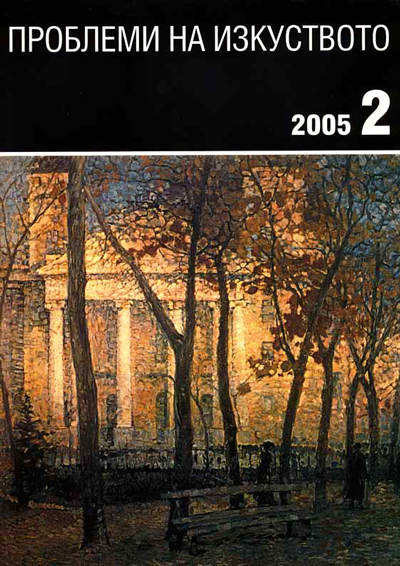Народният репертоар на Народния театър
The Popular Repertoire of the National Theatre
Author(s): Aglika StefanovaSubject(s): Theatre, Dance, Performing Arts, Fine Arts / Performing Arts, Music, Visual Arts
Published by: Институт за изследване на изкуствата, Българска академия на науките
Summary/Abstract: The text poses questions of the “mass” character of the National Theatre repertoire from the first decades of its existence. In an attempt to catch up with missed artistic experience, it happens that “high” and “low”, “popular” and “elite” often lose their identification features, their diversities during Bulgarian Renaissance (1762 – 1878). At that period any work of art is taken for valuable information, due to the belated institutionalization of the acting craft in Bulgaria. Any theatre production would pass on the stage of the National Theatre without prejudice or conservative bans; everything is examined in order both Bulgarian theatre artists and theatre goers to gain enough artistic and theoretical information on the different genre forms, plot options and artistic cross points of interest characteristic of drama. It all urges the audiences, and along with it the theatre critics, to take an active critical view, to build on dynamic criteria for comprehending the different works of art. The National Theatre creates a new cultural geopolitics whose set of rules is established according to the cultural specificity of the region. In it, romantic drama and melodrama are often taken for tragedy; comedy is regarded as a purely educational genre and a corrective measure. Classical plays are alternated by melodramas and saloon comedies; modern drama smoothly coexists together with its lower, “mass” version. National Theatre repertoire in the first theatre seasons is typically a pastiche compiled from the world aristocratic and boulevard stages, thus inserting itself as a product of “third culture” (Edgar Morin), meaning accessible for everyone, offered as a kind of “popular reading”, though on behalf of a formal, more and more “stately” institution. Hundreds of years of wars between directions and styles in drama are reconciled here. Mass entertainment feature is needed for attracting the audiences that are still not accustomed theatergoers, for establishing interest in the theatre and forming theatre habits that would later lead to the estimation of the “high” dramaturgy of concepts.
Journal: Проблеми на изкуството
- Issue Year: 2005
- Issue No: 2
- Page Range: 36-54
- Page Count: 18
- Language: Bulgarian
- Content File-PDF

